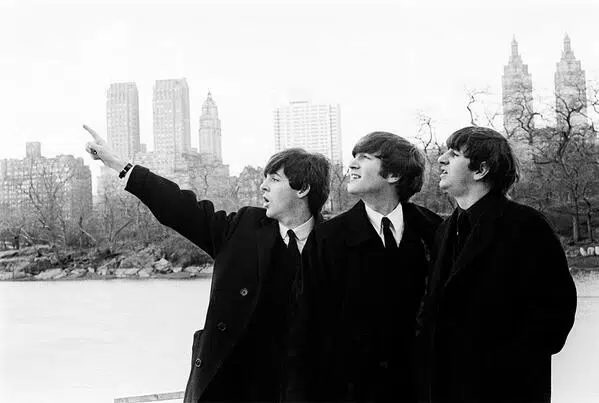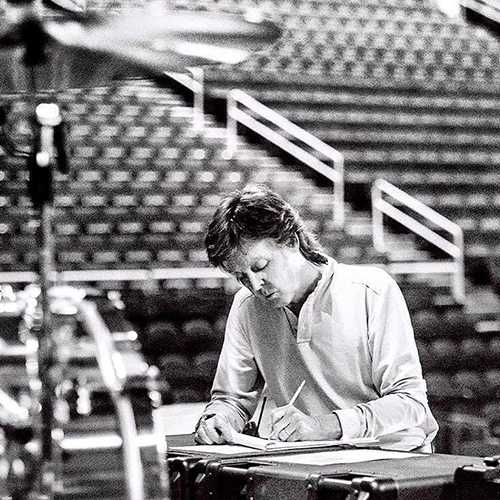Timeline
Article Feb 07, 1964 • The Beatles travel to America for the first time
EP Feb 07, 1964 • "All My Loving" by The Beatles released in the UK
Rehearsal Feb 08, 1964 • Rehearsals for The Ed Sullivan Show
TV show Feb 09, 1964 • The Ed Sullivan Show
Interview Feb 10, 1964 • The Beatles interview for Associated Press
Next rehearsal Mar 01, 1990 • Japan • Tokyo

February 8, Manhattan
Our second day in New York, we went to the CBS TV studio for a rehearsal. Ed Sullivan was the host of the most popular variety show on television. He was deferential and obliging. He even put on a Beatles wig as a joke. They were soaking up the attention. Everywhere we went—in restaurants, passing a bar—there was Beatles music playing. But they never allowed themselves to get a swelled head. We usually just sat around at the Plaza.
As I had done in Paris, I stayed on the same floor as the band. Fact: When you have good-looking guys and their record’s number one, you have girls fighting to get onto the elevators and the back stairwells to get onto the 12th floor. Fact: A couple of girls snuck in and jumped on their beds and security had to take them away. This was rock and roll. Elvis Presley, same thing. But it was a big problem for Epstein because he didn’t want any incident to happen on his watch. He would discuss this with me: “We must watch this. We’re introducing young girls to the Beatles and we’re responsible.”
I began to understand how the band interacted. As I saw it, Paul was the leader. He seemed the most sophisticated, most business-minded, thinking about their image. He was upbeat and encouraging. John was a leader in other ways on other days. He was the conscience of the group, certainly. Creatively, you sensed John and Paul were in charge, insisting, “This is what we do.” Together, they had the last word.
John was a thoroughly decent guy. He was the most sensitive of the four, never wanting to insult anyone. At one of the New York dinners, someone was singing the national anthem. And a member of the party made a sarcastic remark about the singer’s delivery. John scolded him, “Be quiet.” He didn’t want this stranger to be associated with the Beatles—and the Beatles, by association, to be seen as disrespectful, especially over the national anthem.
George was very serious and thoughtful. He was secretly impatient, I’d say, with all the bowing and scraping. But he was always courteous—to the point where, if the band would rush past a group of fans, he’d go back and apologize for how they got caught up in the moment. One night, I went with George to Coney Island, just the two of us. George was sort of homesick. I was alone too. He wanted to see a part of America that was different. But Coney Island? It was February, eight at night, with only one or two places open. It was drab and disappointing. We might as well have been in Bournemouth.
Ringo was accommodating, funny, even-keeled. He was part of the formula that made them a success. And he actually became an anchor for the band, onstage and off. Whenever there was tension, Ringo brought composure.
In New York, I learned how Ringo had come into the band in the first place. Pete Best had been the drummer in the early Beatles. His mother, Mona Best, had opened the Casbah Coffee Club in Liverpool, where the band played some of their first gigs. But as they became successful, the word was that she’d become overbearing and supposedly kept bugging Epstein about “Pete’s band.” And for this and other reasons, apparently, Epstein—and the Beatles—let Pete go. And up pops Ringo.
Harry Benson – From The Beatles Stormed America in 1964. I Was With Them, Day and Night | Vanity Fair, January 17, 2024
